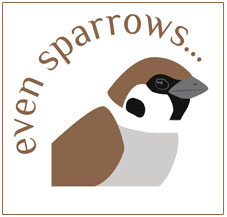

THE MAGIC OF MAY MIGRATION
Posted: 15.05.24 in Articles category
THE MAGIC OF MAY MIGRATION
Birds are on the move. In our northern hemisphere millions of birds are currently flying northwards to their breeding grounds. The month of May marks the peak of the spring migration and 11 May this year is designated 'World Migratory Bird Day' in recognition of this huge avian event. The idea behind such a designation is to help raise global awareness of the many threats faced by migratory birds and the need for international cooperation to conserve them. Birds flying long distances face perilous journeys that involve crossing political borders between countries with very different environmental laws and conservation measures. Migrating birds need protection not only in their breeding grounds and wintering areas, but also in the various sites on route that they use to stop over. Hence the need for national governments and environmental NGOs to work together to develop multilateral agreements such as the African-Eurasian Migratory Waterbird Agreement. There’s a special focus in 2024 on the importance of insects, which are essential food sources for migratory birds. The stark reality is that insect populations are declining at an alarming rate, and bird species reliant on those insects for survival are in decline too. Recent analysis in the Journal ‘Science’ has revealed that upto 9% of the world’s insect population is being lost each decade. The USA and Canada have seen bird populations decline by 29% since 1970, equating to nearly 3 billion fewer birds! Here in Europe it seems that the Pied Flycatcher’s decline has been linked to shortages of caterpillars as a result of climate change.
Avian migration in May can seem magical where I live. There’s a surge of warblers like the Lesser Whitethroat and Garden Warbler, Swifts arrive in my village and spring passage waders like Temminck’s Stint are seen on the coast. If the winds turn easterly, more unusual birds can be found like the remarkable Grey-headed Lapwing at Low Newton on 1 May last year – a bird from NE China being seen in the UK for the first time. Yet my most incredible bird sighting in May was a spring migrant seen only 10 miles from home. On 7 May 1998 I saw a Slender-billed Curlew at Druridge Pools - one of the last known sightings of this bird anywhere in the world! This bird has always been associated with mystery. Its breeding grounds were thought to be in Kazakhstan, yet have never been located, and its regular wintering ground was confined to a single site in Morocco. Given the bird's enormous rarity, it was no surprise that it took the British Ornithological Records Committee 4 years to decide to accept the record and add the species to the British list - making 557 species at the time. Then in 2013 there was a further twist in the tale with the decision being overturned - an equally contentious decision apparently led by people who had not seen the Northumberland bird. For the record, the curlew remains on my list as the rarest bird I have ever seen and am ever likely to see, and the saga highlights a key message that migrant birds can turn up almost anywhere. Why chase birds all over the world when vagrant birds might turn up on your doorstep?
Bird migration is mentioned in the Bible. Perhaps that is unsurprising, given the clear visibility of very large birds like eagles and storks in migratory flocks flying overhead. The prophet Jeremiah noted that storks knew when it was their time to migrate, in contrast he lamented to the people of Judah who didn't know it was time for them to repent. "Look at the birds and learn" as Jesus was later to say.